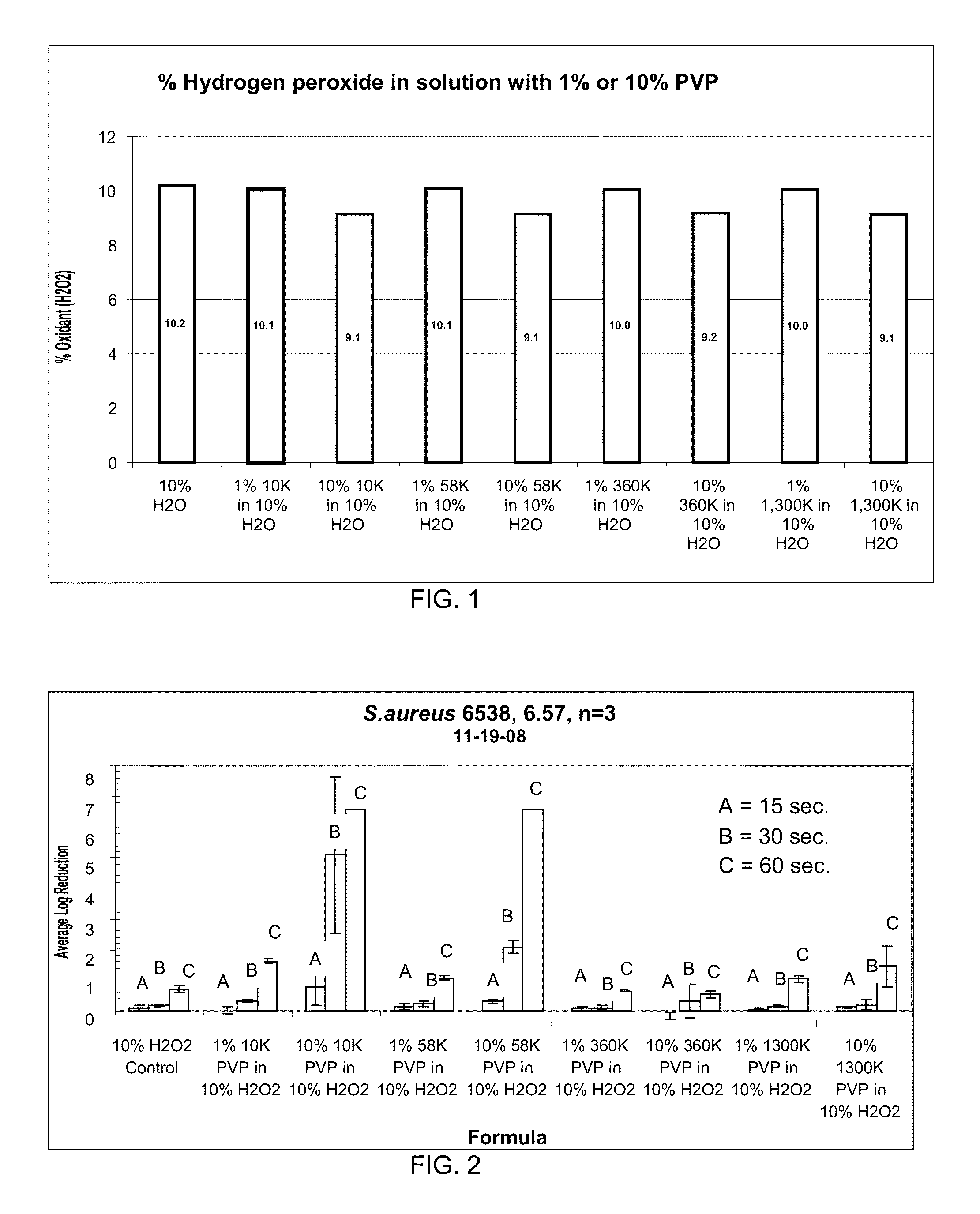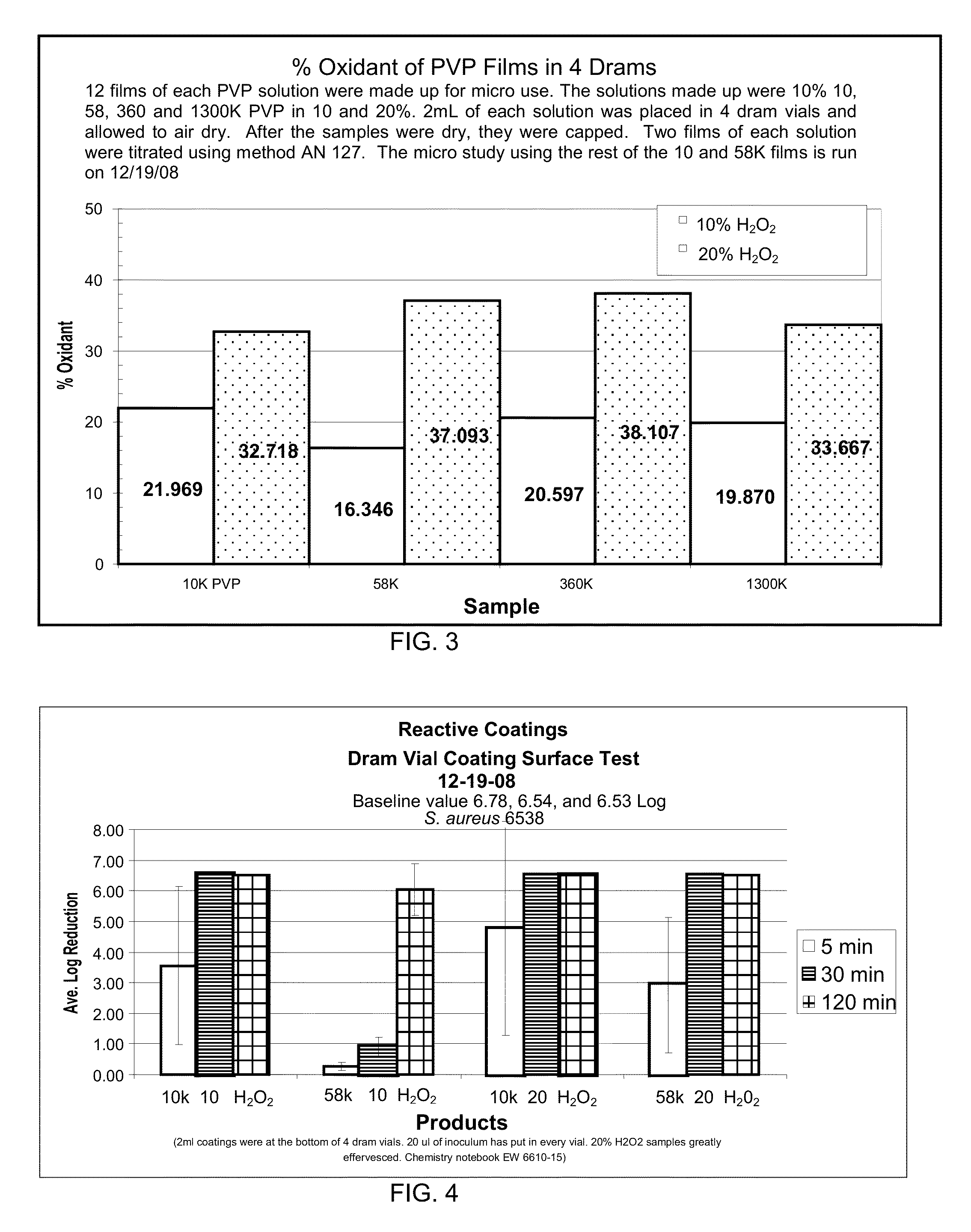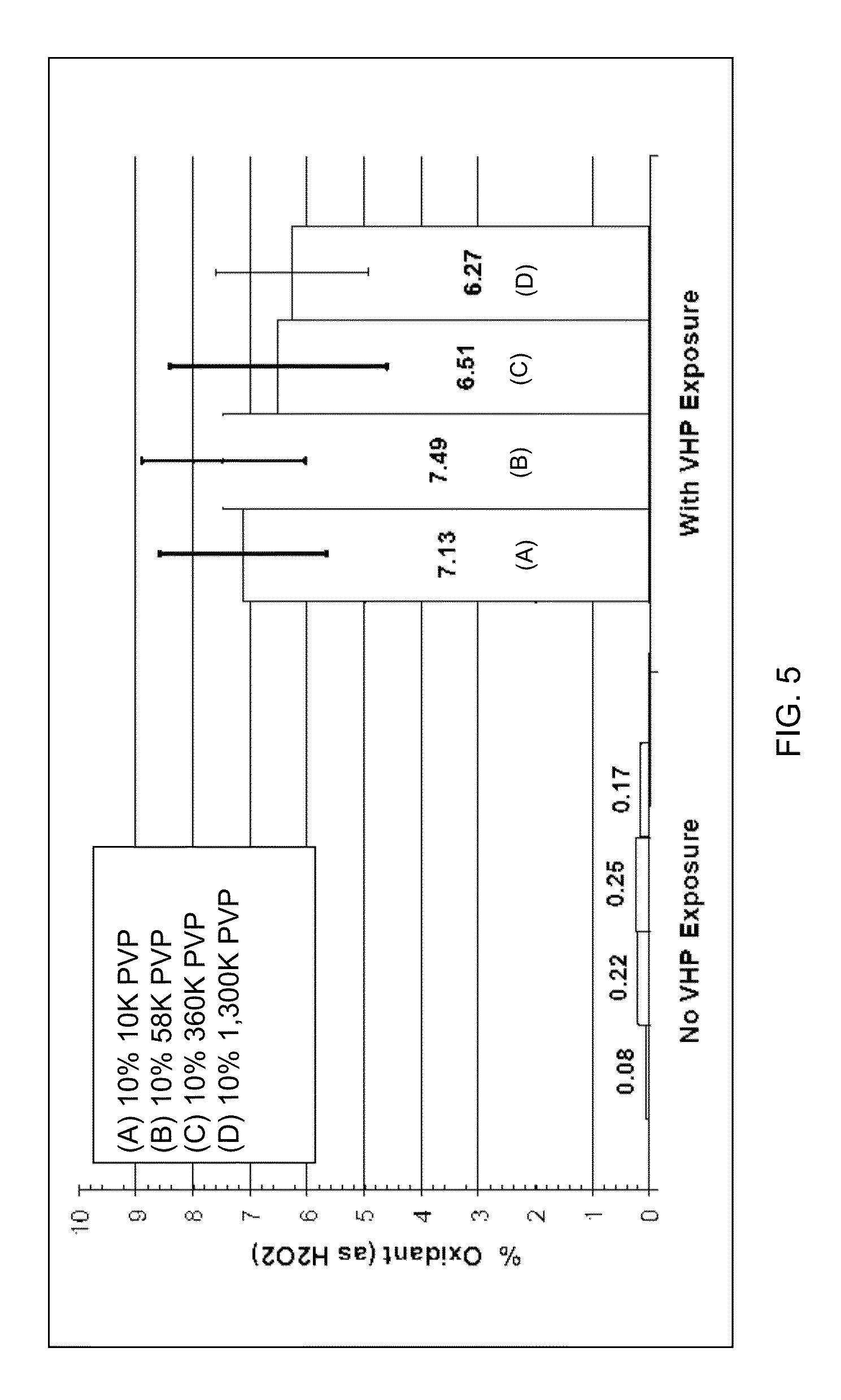Reactive surface coating having chemical decontamination and biocidal properties
a biocidal and reactive surface technology, applied in the direction of biocide, fire extinguishers, paints with biocide, etc., can solve the problems of insufficient long-term or ongoing protection, laborious decontamination/cleaning methods for biological and chemical contaminants, and use of hazardous chemicals, so as to reduce or limit the amount of active available, increase the activity of biocidal or chemical decontamination, and be safe to handle
- Summary
- Abstract
- Description
- Claims
- Application Information
AI Technical Summary
Benefits of technology
Problems solved by technology
Method used
Image
Examples
example 1
Oxidant Content and Efficacy of PVP / Hydrogen Peroxide in Solution
[0179]Many materials significantly degrade hydrogen peroxide (HP) when blended in solution. The first step, therefore, in determining whether PVP can be used with HP was to create blends of different concentrations and molecular weights of components and measure the impact on peroxide concentration.
[0180]Four molecular weights of PVP were tested at two concentrations, 1% and 10%. The molecular weights of the PVP were 10K, 58K, 360K and 1300K. The concentration of hydrogen peroxide used was 1%, 5% and 10%. The solutions were measured for total oxidant and results were analyzed for trends that would indicate that the hydrogen peroxide was degrading, rather than complexing with the PVP polymer. The resulting hydrogen peroxide concentrations are shown in FIG. 1 and in Table 1 below.
[0181]
TABLE 1Effect of the addition of PVP to HPMolecular WeightConcentration1% H2O25% H2O210% H2O2ControlWater Only1.0%5.1%10.2%10K PVP1% PVP1...
example 2
PVP and Hydrogen Peroxide Cast Films
[0187]Films were prepared (cast) from solutions of hydrogen peroxide (10% and 20%) and PVP, by letting 2 mL of each of the solutions dry in the bottom of 4 dram glass vials. A variety of molecular weights of PVP were used, including 10K, 58K, 360K and 1300K. Each concentration of hydrogen peroxide was used with each molecular weight of the PVP. Initial and final weights of the vials were used to calculate the oxidant concentration of each sample.
[0188]The results are shown in FIG. 3. The hydrogen peroxide concentrations in the films increased as they dried. Hydrogen peroxide concentrations increased up to two times the concentration in solution. This example demonstrates that PVP films can be made with a very high level of inherent oxidation potential. The measured oxidant levels were about twice that of the initial concentration. There appeared to be no difference in oxidant potential based on the molecular weight of the PVP.
[0189]Microbiological...
example 3
Vaporized Hydrogen Peroxide (VHP)
[0191]An alternative method of applying the hydrogen peroxide to the film is by exposure to vaporous hydrogen peroxide (VHP). After collecting data in Example 2, which showed that drying a PVP-HP solution into a film resulted in a concentration of the peroxide and antimicrobial activity, the object of the next experiment was to determine the oxidant potential of PVP in cast films after exposure to a VHP cycle. It was determined that PVP solutions (without peroxide solution) could be efficiently complexed with hydrogen peroxide by using VHP. With the use of this method, the hydrogen peroxide was readily available on the surface. Concentration may be varied by exposure time and / or concentration of hydrogen peroxide vapor.
[0192]Films were cast from 10% PVP of various molecular weights, prepared in methanol. A fixed volume of 1.2 mL was placed in a weight boat and allowed to dry. Pre- and post-sample weights were collected for use in calculations. The fi...
PUM
| Property | Measurement | Unit |
|---|---|---|
| surface areas | aaaaa | aaaaa |
| area | aaaaa | aaaaa |
| weight | aaaaa | aaaaa |
Abstract
Description
Claims
Application Information
 Login to View More
Login to View More - R&D
- Intellectual Property
- Life Sciences
- Materials
- Tech Scout
- Unparalleled Data Quality
- Higher Quality Content
- 60% Fewer Hallucinations
Browse by: Latest US Patents, China's latest patents, Technical Efficacy Thesaurus, Application Domain, Technology Topic, Popular Technical Reports.
© 2025 PatSnap. All rights reserved.Legal|Privacy policy|Modern Slavery Act Transparency Statement|Sitemap|About US| Contact US: help@patsnap.com



